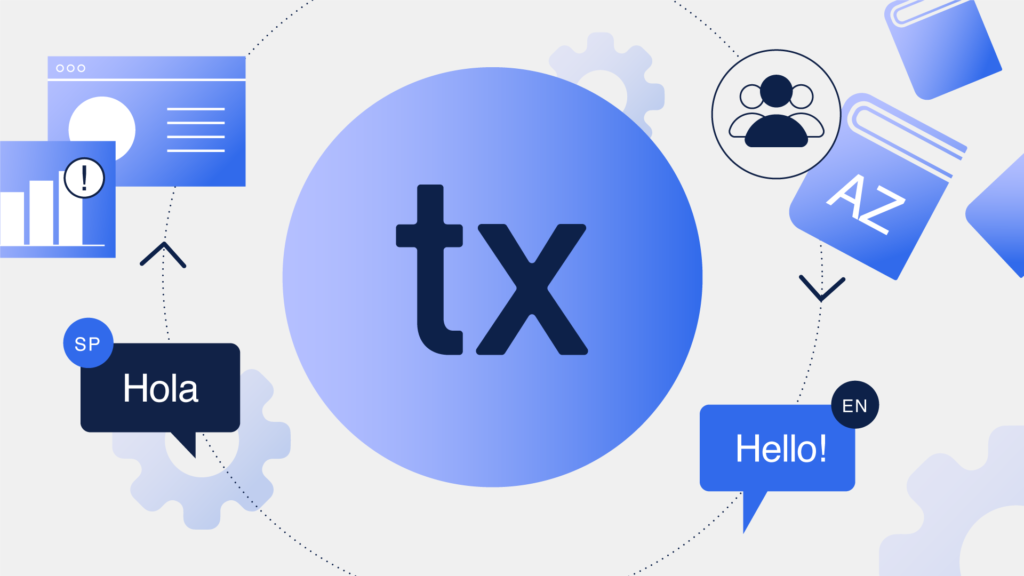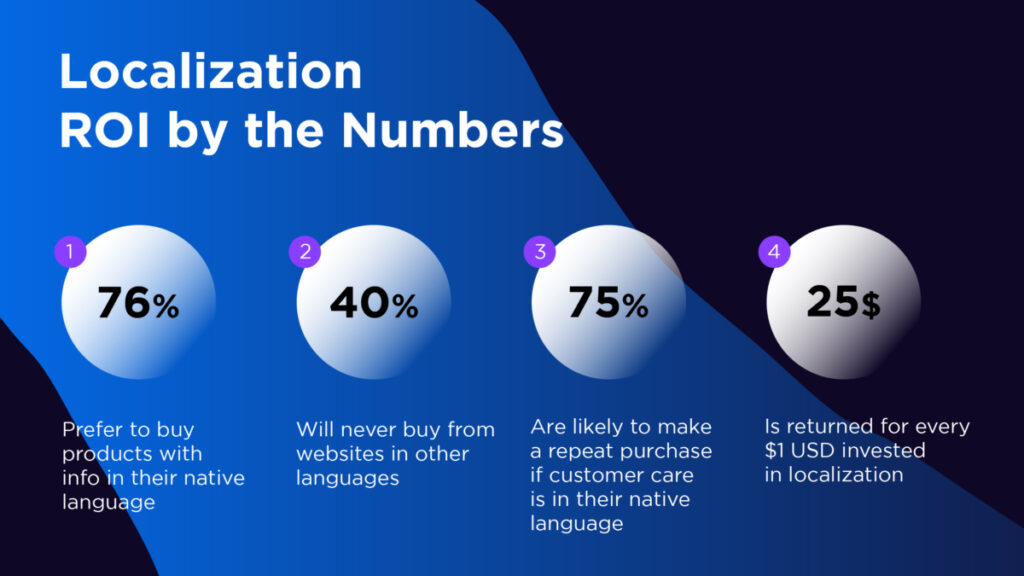
Localization Strategy Development With a Global Strategic Vision
- Building Your Agile Localization Team
- Global Growth Requires Agility
- Localization Strategy Step by Step
- 1: Use a Localization/Content Management Tool That Fits Your Stack
- 2: Integrate Localization Into the Development Process
- 3: Prioritize Regions with a Tiered Structure
- 4: Go Beyond Translation
- 5: Measure and Adapt
- Localization Integration Strategy
- The Importance of a Localization Strategy in Examples
Almost every industry on the planet is a global enterprise. We live in a global digital society. Whether you are a major conglomerate or a lean SaaS company; you reach an international audience simply by having a digital presence. But without a proper localization strategy, that digital presence may not be the best it could be.
Navigating your global strategy without having the essential elements embedded into your brand’s DNA can be complicated. Visualize your users and customers living throughout the globe and craft a travel plan that is built to respond and adapt.
Missing out on key opportunities within the global digital landscape can be fatal to any growing business. Embracing localization is a key component of every growth strategy. Here, we plan to explore how to weave localization into the fabric of your corporate ecosystem.
Setting a clear travel path for your global growth strategy is having the ability to jump in front of any possible obstacle with foresight and agility. This is at the core of any successful business plan. The digital landscape is international.
The objective is to reach your future consumers wherever they live with the knowledge of exactly how their user experience will translate to be accessible, consumable, and personalized. We achieve this with language, content, feature enhancements, and, above all, responsiveness.
For most companies, the pandemic has fast-tracked the competitive landscape of the digital user experience. Today’s marketplace is touchless, accessible, and inclusive. Competing for users and customers who depend on a seamless, personalized experience that takes into account not only languages but cultures, politics, regulations, and consumption.
Building Your Agile Localization Team
At times, we start our companies lean with only the essential team members in place. Crafting and growing your localization team is a direct response to the global adoption of your product. This should not mean that localization professionals and translation technology are an afterthought. Quite the opposite.
Having a strong foundation at the core is what allows for the ability to respond and adapt quickly by knowing how to access the right people and technology that will evolve with you.
Global Growth Requires Agility
Agile is often regarded as a project management methodology for software. But at its very essence is agility. The ability to be flexible to react to change without breaking or restarting from scratch. An essential element to this is the software you implement to manage your technology stack. Organizations use project management tools such as Jira, Trello, Asana, Monday.com, etc. to assimilate into the ecosystem, managing communication and workload.
However, the tools that manage the globalization of content and translations are highly specialized due to the complexities involved with the communication surrounding the content itself. Seek out the best professionals, service providers, and systems that will adjust to your unique business journey.
Localization Strategy Step by Step
Many of us in the localization universe use the term “continuous localization.”
That phrase generally refers to the implementation of processes and tools that are built to adapt and facilitate a constant flow of communication among every stakeholder involved in adapting your product and messaging. Here is a guide to the elements every company needs to have in place.
1: Use a Localization/Content Management Tool That Fits Your Stack
One of the most important first steps in incorporating the best solution to manage your software versions and global content. This is where translation management technology comes into play. However, not all translation management systems are alike. Even the name, “translation management,” does not properly explain their purpose and functionality.
At the very core of a great TMS is the ability to manage a variety of content with multiple versions and the teams that come with it. These often are translators, linguists, quality assurance, engineers, content/localization managers, and more.
The best solution for your team is one that can become a part of your unique company’s existing DNA and evolve with your expansion into global markets. That’s where a robust and flexible API along with integrations can come in handy!
Many rely on shared spreadsheets for their localization efforts. But, unfortunately, spreadsheets always fail to capture the scope of the many moving pieces involved in the globalization of content.
We are no longer simply translating a static document or taking the same web content and making it available in additional languages. We are adapting user experiences.
2: Integrate Localization Into the Development Process
By recognizing that your product will most likely be taking a global journey you should not wait until international consumers become aware of your product. Rather, build with growth in mind. In a typical CI/CD pipeline, you are building your software for continuous updates.
This is what we refer to as an agile localization approach. But before that came what you may know as “waterfall” localization. You can learn more about that in the “Software Localization 101” guide.
Engineers would do their best to interpret the requirements set by people who knew nothing about the mechanics involved and didn’t know how to communicate what they actually needed.
Once they received their “finished” product, it was never what they visualized and by that time, their business evolved into something the software simply couldn’t handle. The entire system would break and never catch up to an evolving digital landscape. Having localization top of mind, throughout development, is where you are able to continually adapt and evolve.
3: Prioritize Regions with a Tiered Structure
Consumers demand personalization. It is not realistic to customize your product for each and every customer across the planet. The purpose of the localization strategy is to limit personalization based on what will resonate with as many consumers as possible. Having a tiered approach works best.
Constant evaluation of the global marketplace and the consumer demand within those regions will allow you to prioritize what will make the most sense for your return on investment (ROI).
Tier one countries or regions would be representative of those markets that have the most potential for growth and you will want to pay special attention to the demands of those customers. Tier two, three, four, and so forth will be adjusted pertaining to what is required with less focus on every request for personalization.
4: Go Beyond Translation
In the past, localization and translation were thought to be one and the same. Today’s localization strategy involves the adaptation of content and experience based on consumer demand, regulations, and accessibility. Competing in a digital space requires several levels based on many variables. There are elements within the design, the imagery that appears with the text, and the references within that text that must resonate with your users and customers.
5: Measure and Adapt
A key component to agility and continuous localization is responding to data. Constant measurement of consumer behavior and feedback is essential. Have the ability to quickly pivot based on responsiveness, usage, SEO keywords, touchpoints, and ultimately sales. This is a fluid process that requires constant monitoring to ensure that you are working effectively by focusing your resources in the right places.
Of course, another important piece of information is ROI (Return on Investment). Speaking of which, you can find out how to measure and maximize your localization ROI in this guide.
Localization Integration Strategy
Localization may look different within every organization. Depending on the structure and mission within a corporate structure, there are teams that serve various functions.
There are designated roles that support individual departments, to companies with one person who wears many hats. This is easy to get lost and forgotten as a key strategic resource and function.
Ideally, it is by translating localization to our colleagues and most importantly key influencers, so that everyone understands how localization sets organizations up for success.
The entire organization should be well-versed in the importance of the globalization of the digital experience and the value of strategic planning and evaluation.
The Importance of a Localization Strategy in Examples
One way to easily communicate the importance of localization is by sharing examples. Then your team has the ability to visualize possible outcomes and share the necessary data that quantifies the value. Look no further than costly mistakes made by major organizations that may have been able to absorb the mishap but would cripple your business.
Here are some impactful examples:
- Text size and length that impacts design
- Translated headlines that are offensive
- References that won’t be understood when translated literally
- Offensive imagery in certain markets
- Regulations regarding accessibility
- Regulations pertaining to privacy
- Cultural mishaps in markets
- SEO localization
Sharing localization strategy examples with your team will allow your colleagues to understand the value of localization strategic partnership and the technology required to support globalization. This will enable you to integrate localizatization throughout strategy, production, and beyond.
Managing the globalization of the digital experience requires unique technology that is able to evolve with the complexities of localization and the evolution of the brand. With partnership and continuous strategy and analysis that allows for constant pivoting to compete in the ever-evolving international marketplace. Localization is a key component to expanding the reach of virtually every business.
Related posts
The ultimate guide to app localization
Top Localization Strategy Examples to Visualize Global Growth

AI Localization: Everything You Need to Know











